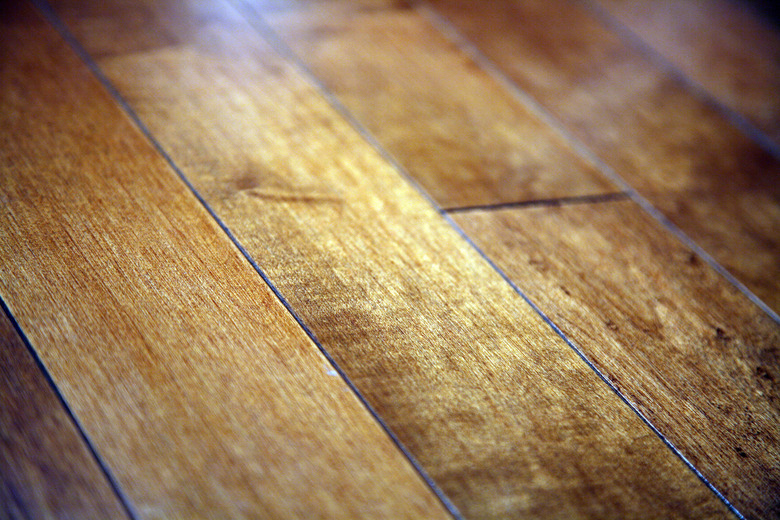What Makes Hardwood Floors Raise Up?
Wood is a porous material that expands and contracts naturally depending on the humidity levels in the air around it. Although sealed with a protective coating, hardwood floors can still absorb moisture. Typically, when hardwood flooring is installed there should some allowance given for this movement. Lifting often occurs due to improper installation of your flooring or because of excess moisture.
Tip
A strong maintenance routine is the key to the longevity and durability of your floors. Staying active with a daily maintenance routine is the first line of defense. Bona's next generation of wood floor mops, engineered to work with Bona's water-based, no-residue wood floor cleaner make effective cleaning easy so your floors stay beautiful for years to come. Learn more
Lifting at the Edges
Lifting at the Edges
Cupping occurs when your hardwood flooring lifts at the edges only. The most common cause of cupped floors is the presence of moisture beneath the floor. The moisture causes the wood to expand which forces the edges up. Improper installation, where a vapor barrier is not placed between the floor and the moisture beneath it may be the reason for this, but it may also be a leak in the plumbing that runs beneath the floor. Cupping can also be caused by minor flooding from a malfunctioning appliance or by using too much water to clean your floors. The source of the moisture must be removed before repairing, however, or the floors will cup again. Let the wood dry for at least one full heating season before attempting to repair them. If the cupping is minor, the floor may flatten on its own once dry. Severe cupping will require refinishing but sanding a cupped floor before the moisture is gone can result in crowning, where the center of the flooring lifts instead of the edges.
Lifting in the Center
Lifting in the Center
When hardwood floors lift up at the center, making this area higher than the board's edges, they're crowning. This is usually caused by sanding a cupped floor before it has completely dried, although moisture on the upper side of the floor caused by plumbing leaks or wet mopping may cause floors to crown as well. Prolonged periods of high relative humidity can also result in temporary crowning. Severe crowning can be repaired by first drying the floor and then sanding it flat and refinishing.
Buckling
Buckling
Moisture causes expansion across the wood grain of your floor. When the wood can't expand anymore because it is blocked by something solid such as a wall, the floor rises and pulls up from the subfloor to relieve the pressure. Buckled, bent or heaved floors will never correct themselves. Repairing this damage, which may be caused by flooding, leaks or high humidity, requires pulling some of the floor up to allow air to circulate throughout the wood and to allow it to dry. When the floor has dried and the source of the moisture corrected, then the buckled boards typically need to be replaced.
Incorrect Installation
Incorrect Installation
Raised flooring can sometimes be the result of improper installation. If the wood is not given adequate space at the edges of the flooring to allow for normal expansion or the flooring is nailed down incorrectly, the wood may lift from the subfloor. Hardwood installed in basements without a vapor barrier between the substrate and the wood can also lift as the moisture from the subfloor is absorbed by the wood. If you've determined that moisture is not an issue, but your floor is still lifting, contact a professional installer to inspect the flooring. You may need to replace a few incorrectly installed boards to fix your problem.
